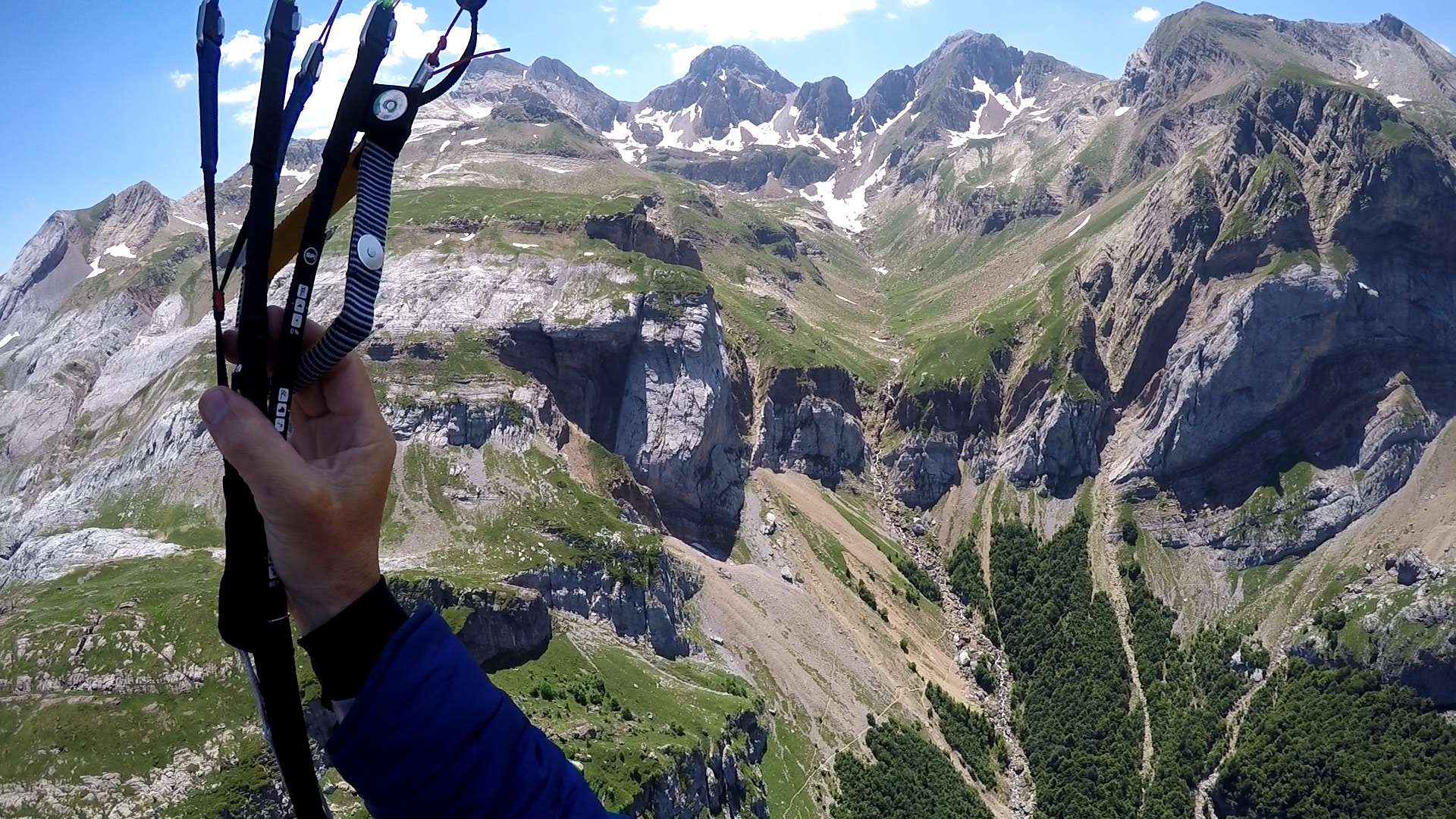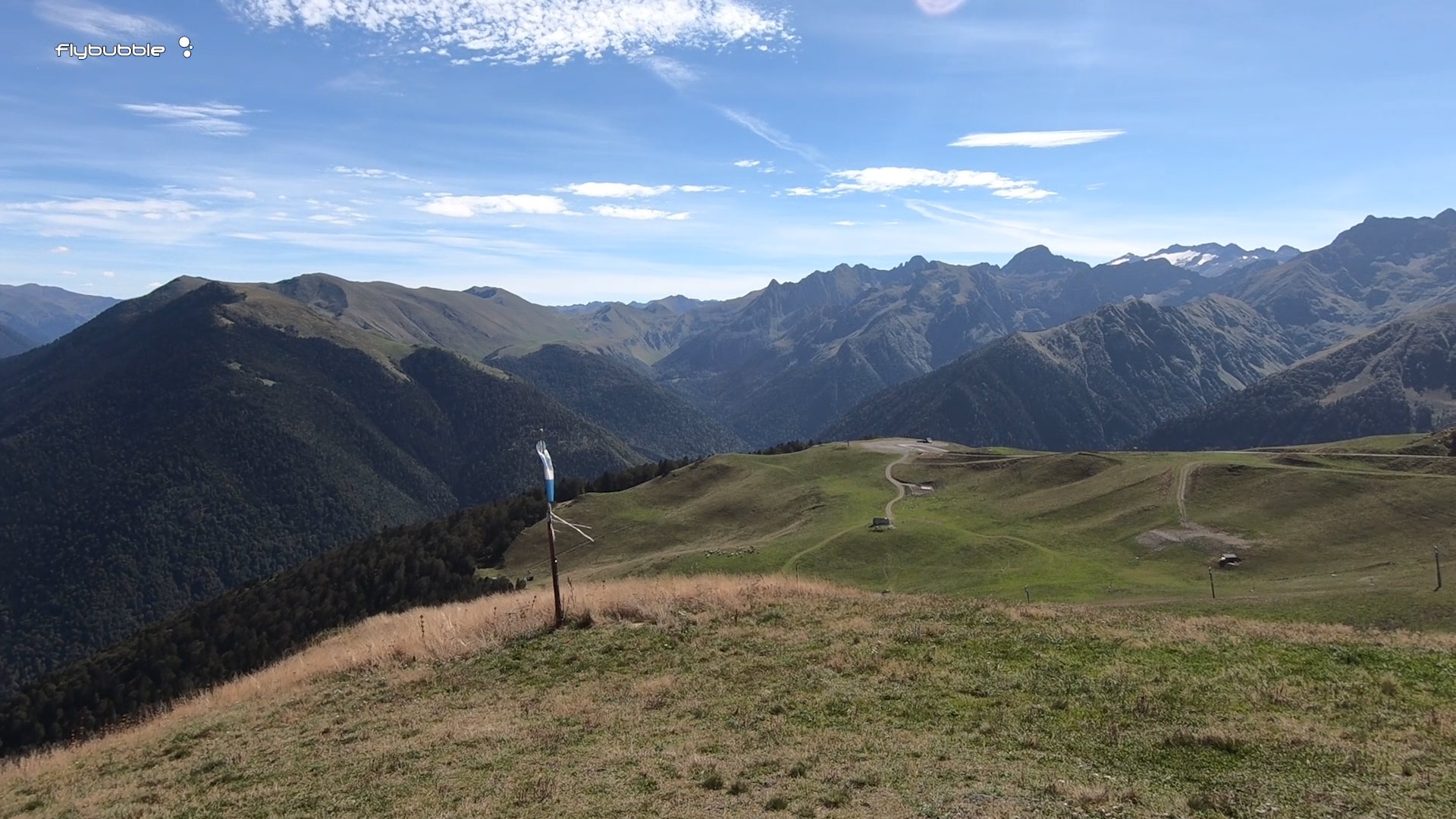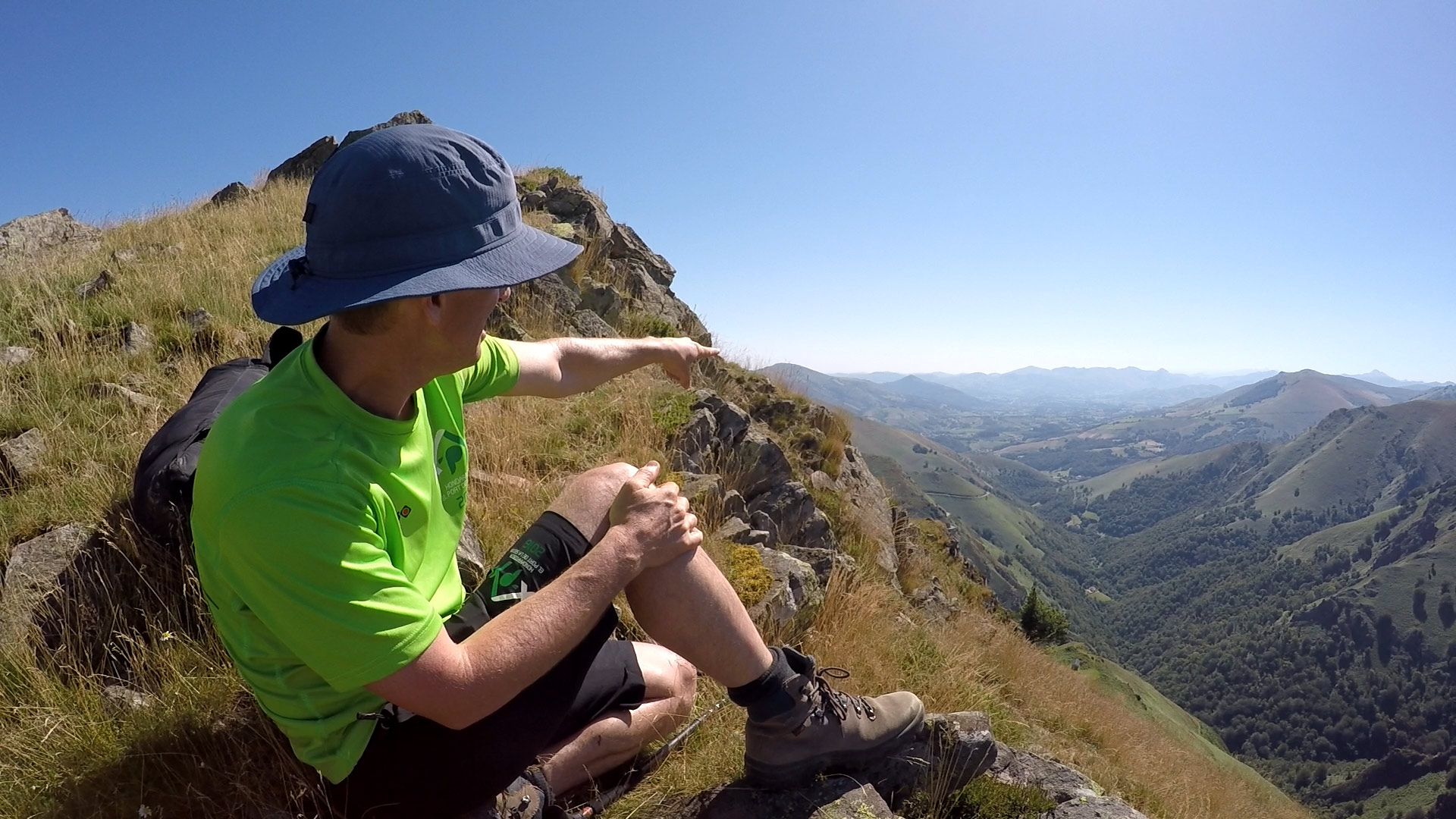
Flying a paraglider above mountains is an amazing experience but has some risks that you don't face when flying over the flatlands. Where are the danger zones? How do the winds work? Where are the best thermals?
It's best to choose a mellow time to begin mountain flying. If you fly early or late in the day, late in the season, let's say 10am in September you'll usually have an easy flight. Try the same thing at noon in June and you are in for a ride on the wild side. What catches most pilots out is unfamiliarity with air that moves so much - up down and sideways. Soaring and scratching should be approached with caution. When you're starting out in the mountains, give yourself lots of separation from the rock faces.
Mountains? Light winds only!

Pilots who usually fly on the coast or on small hills can become accustomed to flying in strong wind. Take care when moving to the mountains, as the air currents can become far more powerful, and escape routes can be limited.
There is a valley wind, caused by air rising over the peaks, and air flowing in from the plains to replace it. There is an upslope breeze, on every slope exposed to the sun, where the warm air will follow the terrain as it rises. And there is the meteo wind, moving overhead with the passage of the weather systems. These three winds interact to create a complex aerology.
Added to this there are individual thermals which will draw the air towards themselves as they rise, changing the direction and adding a spin.
Sometimes there’s even the fifth wind to complicate matters, the downslope katabatic flow from glaciers, snow, or mountains very late in the day.
So it’s best to start your mountain flying adventures on days with light winds on the forecast.
Mountain terrain is hazardous

Pilots often forget that an unplanned landing on a mountain slope can be a seriously risky situation. Even friendly-looking terrain can be littered with rocks and present a treacherous slope. Highly recommended gear: a small first aid kit, some food and water. Waterproof clothing. Shoes that can handle rocky terrain (or snow and ice, if you’re going that high). Spare batteries for your phone. A piece of webbing and a carabiner (for securing yourself after a tree landing). And the most useful by far, an InReach, or Spot satellite rescue device.
Mountain flying video
Join Flybubble Paragliding for a laid-back introduction to mountain flying on a paraglider. In this tuturial: choosing a route in the mountains, identifying risk zones, entering a thermal, working a leeside thermal, shifting in the core, turning tight, using another pilot to identify lift, taking the best lines, doing low 360s safely ... and much more.
You might also enjoy GETTING IN CLOSE article and VALLEY WIND article
Brought to you by Flybubble
Like what we do? The best way to thank and support us is to buy gear from us and recommend us to others. Review our service on Trustpilot and our products on Flybubble Shop. You can also subscribe to Flybubble Patreon. Thank you!

